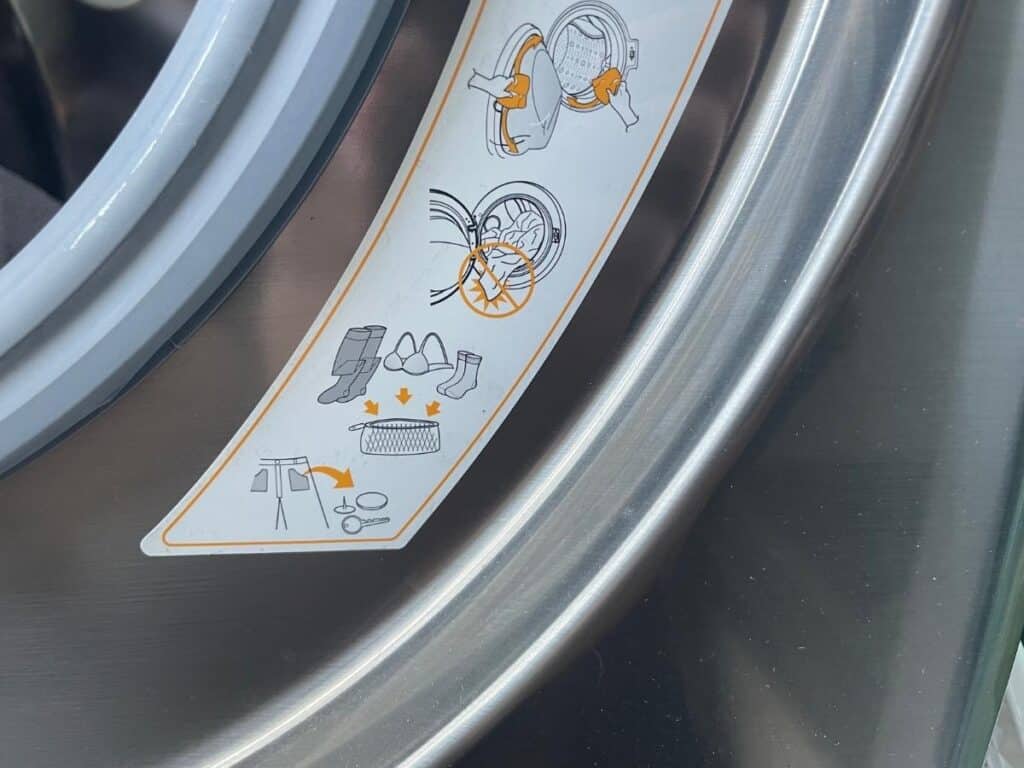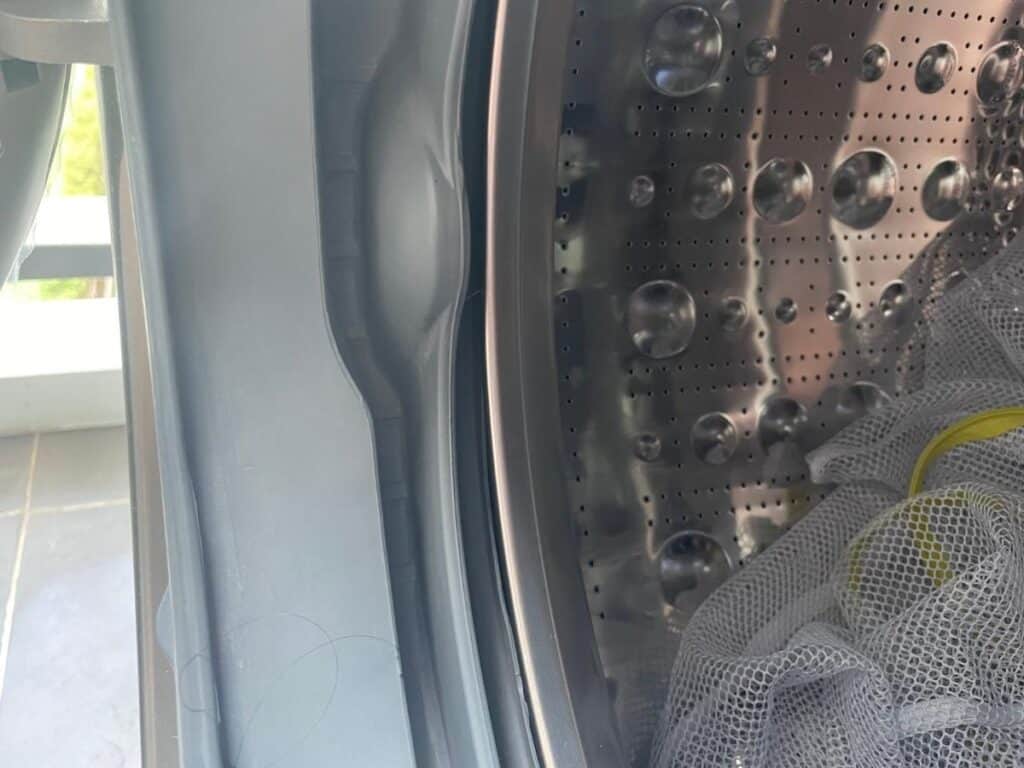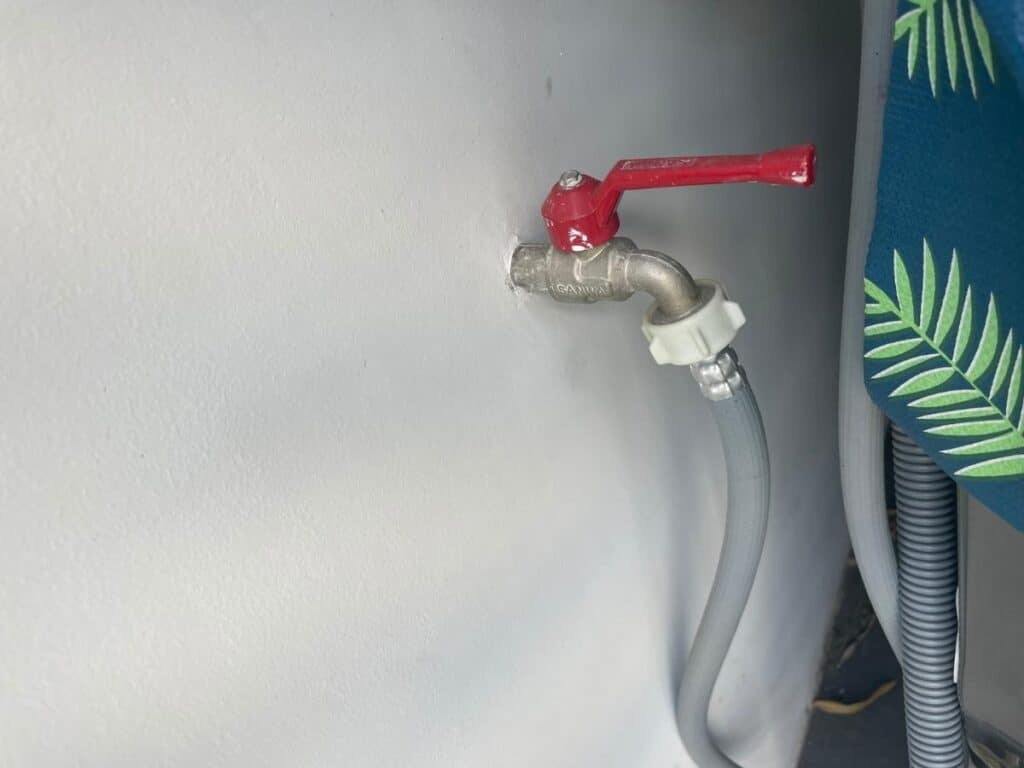We all know that washing machines are there to help us keep our clothes, towels, linens, and bedding clean. I had a fright a few nights back when my washing machine suddenly had water pressure issues; I looked and found the filter was dirty and blocking the water from getting through. I knew right then I needed to learn more about washing machine care.
If you use your washing machine daily or even weekly, chances are it needs some care. Cleaning a washing machine at least once a month will make it last much longer and keep stinky mold from growing in hidden areas on the washing machine.
After I cleaned all my filters, I realized I had no idea that there were so many things that I needed to know about how to keep my washing machine in good condition. I dived into research and the washing machine manual, and here is what I found.
Do I Need To Clean My Washing Machine?
Washing machines need care and maintenance just like any other appliance. Like most of us, I am used to having a washing machine take care of my clothes, but you need to take care of your washing machine at least once a month.
Ensure you set aside some time to do this. If a washing machine is run for too long without being cleaned, your clothes could start to get stains and streaks as the build-up of old detergent, grime, and dirt will begin to get onto your clothes.
Regularly cleaning your washing machine and following the tips I will discuss in this article will help extend your washing machine’s life and save yourself lots of time and money.
Here are ideas to guide you in the right direction when you don’t know where to start.
Read The Instruction Manual For Additional Information
Chances are that there is some helpful information about how to take care of your particular make and model washing machine. Check if your machine has a self-clean or clean machine mode.

Most newer washing machines have this function, and you can easily clean the device using one of these cycles.
If you have a clean mode on your washing machine, it is essential to use a particular washing tablet you buy in the same aisle as your washing powder. You drop one tablet in the machine, set the water to the hot cycle, and let it run on a full load cycle.
Doing Regular Inspections
Check to see where all the filters are in and on your washing machine. These filters collect all kinds of fine sand, hairs, and fibers that need to be removed regularly.
Once a month, check the water pipe filter; this little mesh filter sometimes gets dirt stuck to it, which can make a big difference in the water pressure of the washing machine.
How Do I Deep Clean My Washing Machine?
The one question I came across the most is how to deep clean the washing machine. Some people suggest a tablet you buy to clean your washing machine; others suggest using things you can find readily available in your home. I deep cleaned my washing machine, and this is what worked for me:
Cleaning The Basics First
The 1st thing you need to do is sanitize the door gasket. Soak a rag in a 1:1 ration of hot water and bleach. The bleach will kill any germs and bacteria that might want to grow.
Remember to wipe down the rubbers/seals and pull them gently to wipe down any mold or mildew clinging to the rubbers/seals. As stated before, you need to clean the detergent tray, making sure to clean that cavity in the machine and the tray. These areas can be a hotspot for mold and mildew.

Sanitize the drum by putting half a cup of baking soda and half a cup of vinegar into the drum. Put a few clean hand towels in with the cleaning solution as some experts don’t recommend running a washing machine empty.
Now you have to set your washing machine to the hottest water temperature setting and set the load to the largest size and the most extended run cycle. It will deep clean all the nooks and crevices.
More In-depth Cleaning
You need to make sure you clean the lint trap/filter. It is a filter on the inside of the washing machine and should ideally be cleaned after each big load. Soak the filter in warm water and wash it with a bit of dishwashing detergent.
As stated before, cleaning the filters is very important. You also need to check the pump filter. It is usually located either at the bottom in front or the back, and this filer is where some of the bigger items will go, like hair, coins, and other small objects.
Lastly, wipe down the washing machine on the outside also. It will help eliminate any germs that might try to cling onto your machine.
You only need to deep clean your washing machine once a month or at the very least every second month. To help me remember, I put it on my to-do list, and I make sure not to skip unless it’s an emergency.
How Do I Know When I Need To Clean My Washing Machine?
There are a few ways to check if your washing machine is in its’s best working condition or if it needs a bit of TLC. Here are some indicators that it’s time to do a deep clean on your washing machine.
- Have you noticed after a wash cycle that you have has a smelly odor coming from the washing machine? It’s possibly a sign of mildew or mold growth somewhere inside the washing machine or backed-up dirt and grime.
- When you turn the water on, and there is no water pressure, it might be a blockage in the filters.
- If you notice strange streaks or oily stains on your clothes, this could be built-up grime mixed with softener, and it could stain your clothes and other linens.
- A dark slimy residue between the rubbers/seals means you have soap scum build-up, and it’s time to deep clean your washing machine.
Hacks For Keeping Your Washing Machine In Good Shape
Sometimes we forget that we need to keep the appliances in good shape, or the replacement costs could hit the wallet hard. Below are some helpful hacks to help keep your washing machine in good condition.
Use The Right Water In Your Washing Machine
Try not to use “hard water” to wash your clothes. Hard water is water that comes from wells or boreholes underground. Water that comes from underground has a lot of salts and minerals that could damage your washing machine.
Too much salt in the water also prevents the washing powder from foaming, so your clothes might not get cleaned properly. If you only have hard water to use where you stay, using a water softener will help reduce these “hard water” issues.

I have written a very detailed guide on removing limescale (caused by hard water) from your washer here.
Never Soak Or Leave Wet Clothes In Your Washing Machine
If you have clothing items or linens that need a good soak, use a bucket or the tub instead of the washing machine. The extra weight could damage your washing machine over time.
Don’t leave wet clothes too long in the washing machine. If you leave wet clothes overnight in the washing machine, you could end up having to rewash them. It doesn’t take long for mold or bacteria to grow; clothes quickly absorb smells.
I also wrote an article on What Causes Smelly Clothes? (And how to quickly fix it) that you probably will like.
Important Things To Remember Before A Wash Cycle
Remember always check pockets for coins, small objects, and keys before washing. These objects could get stuck somewhere, rip your clothes and damage the drum of your washing machine.
Never overload your washing machine. The extra load gets heavy when wet, and this excess weight puts extra pressure on the washing machine motor; this, in turn, will wear the motor out in about 3 years. So, take care to rather wash that extra load to keep your machine motor from breaking.
Don’t use too much detergent. Using more detergent than is recommended by the manufacturer won’t clean extra dirty clothes. In fact, the opposite is true.
Too much detergent will build up in your machine and cause additional stains and marks on the clothes, and using too much detergent will also lead to your clothes and especially towels becoming smelly.
Washing machines are manufactured to use a certain amount of detergent with a certain amount of water. When you use too much detergent, there won’t be enough water to wash out the detergent properly, and your towels and clothes will build up some excess detergent leading to mold growth and stinky clothes.
Take Care After Running A Wash Cycle
Don’t close the door to your washing machine immediately after a wash. It is a common mistake that a lot of people don’t even realize they are making. Leaving the door open for at least half an hour after the last wash helps the drum and other washing machine parts dry properly.
It can prevent bacteria, mold, and mildew from forming, and your machine will smell nicer. It will also protect the delicate inner workings from getting too much moisture.
Remember to check the hoses and pipes often. Look out for cracks or breakage in any of the inlet and outlet hoses. If you find cracks, leaks, breaks, or blockages, you will need to have it replaced before using it again, as you could end up flooding a part of your house.
Key Points To Remember When Using Your Washing Machine
Make sure your washing machine is always level before using it. If the washing machine is uneven and enters a spin cycle, you could end up with a damaged washing machine and damaged floors.
If you battle to keep your machine level, you might want to check the rear legs; most machines have adjustable legs that will help your machine stay level.
Keep your washing machine as close to the ground as possible, it won’t vibrate as much, and that will help your machine stay level.
If you have a front-loading washing machine, wipe down the door seal after using the washing machine. It will help deter the growth of mold.
When To Call In The Experts For Your Washing Machine
Even if you maintain your washing machine and clean it regularly, there might come a day when something somewhere needs more than a thorough clean. Here are some problems that you might need to call a qualified repair technician to sort out your washing machine woes.
- If the machine makes huge thud noises when spinning, it might not be level, but if your floor and washing machine are level, it might be an issue with the machine itself, and it would be best to call a qualified repair technician,
- Suppose the washing machine doesn’t want to turn on. You need to check the power cable and the plugs; if all the wires and plugs check out, you might need to call a qualified repair technician as it might be the motor or electrical.
- What if the washing machine won’t drain water? It could be your machine pump, or it could be a plumbing issue. You will need to check the machine’s drainage pipe; calling a qualified repair technician is your best bet if you find no problem.
- If the drain hose keeps clogging, then the likely culprit is a broken pump. You need to phone a qualified repair technician to either fix the pump or to replace it.
- If the machine turns on, but some washing cycles won’t run, this is usually a machine fault and could be the pc board. A qualified repair technician will be able to repair your machine.
- Water leaking everywhere is likely a hose problem, but if there is no problem with the hose, it might be the machine, and you need to phone or help.
Here’s a guide I wrote on what to do if your washing machine stops mid-cycle that may help you out with some of these issues.
Conclusion
Having appliances to help us with everyday chores is lovely but can sometimes be a pain. We need to ensure that we take the time to maintain our washing machine. Spending a little extra time and effort might save you hefty repair or replacement bills in the future.
So, if your clothes smell kind of funky and you see the detergent tray looks kind of gunky, it’s time to give your washing machine a spa day with a deep clean.
Next, you can learn how to clean your dryer.

I’m an expert wardrobe organizer and a bit of a clean freak. I created this website and its YouTube channel to share practical guides about laundry and organizing. My teachings have been featured in multiple large news publications, and I’ve self-published two wardrobe organizing books and an entire course on the subject.
